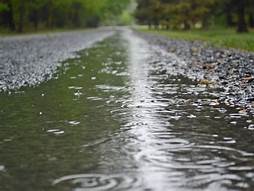The few days of rain following a dry spell can mean trouble on the road and travelers everywhere need to be aware of the hazards that can follow.
Oil and grease don’t wash off the roads during the dry season. Instead, they come to the surface all at once with the first rains of the fall. That can make roads unexpectedly slick and treacherous and if it catches you by surprise, you could end up in a crash.
Here are some tips for driving in the rain.
- Be aware of conditions. Rain can create dangerous driving conditions with reduced visibility, reduced traction between tires and the road and that means less predictable car handling. When it’s raining, be cautious and give yourself more time to get where you are going.
- Slow down, especially in high water. Driving through several inches of water at high speeds can cause you to lose control. Lowering your speed helps you watch out for sudden stops caused by disabled cars, debris and other hazards.
- Turn on your headlights to improve visibility. Disengage your cruise control.
- Keep your distance. A car needs two to three times more stopping distance on wet roads.
- Replace wiper blades regularly. Make sure your defroster is functioning properly, especially if you haven’t used it in a while.
- Check your brakes. After driving through a puddle, make sure the brakes are working properly by tapping them gently a few times.
- Check your tires. Make sure tires are in good condition and are at the recommended inflation level. Tires should have at least 1/32 of an inch tread depth at any two adjacent grooves, the minimum allowable by law. Driving on over-inflated or under-inflated tires is dangerous on wet pavement.
- Watch for hydroplaning conditions. Hydroplaning occurs when your front tires surf on a film of water. It can occur at speeds as low as 35 miles per hour, especially if tires are worn. If you hydroplane, ease off the gas, gently apply the brakes and steer straight ahead.
- And perhaps most important is to look out for each other. Bicyclists should remember that cars don’t stop as quickly in the rain and motorists need to keep a sharp eye out for bicyclists and pedestrians when visibility is poor.


